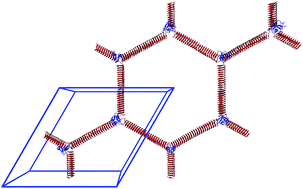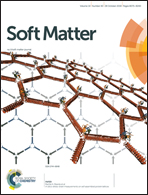In silico stress–strain measurements on self-assembled protein lattices†
Abstract
Due to their large mechanical strength and potential for functionalization, beta-solenoid proteins show promise as building blocks in biomaterials applications such as two- and three-dimensional scaffolds. We have designed simulation models of two-dimensional square and honeycomb protein lattices by covalently linking a beta-solenoid protein, the spruce budworm antifreeze protein (SBAFP), to symmetric protein multimers. Periodic boundary conditions applied to the simulation cell allow for the simulation of an infinite lattice. We use molecular dynamics to strain the lattice by deforming the simulation cell and measuring the resulting stress tensor. We evaluate the linear portion of stress–strain curves to extract the corresponding bulk and shear elastic moduli. When strained at a rate of 0.3 nm ps−1, the lattices yield a bulk modulus of approximately 3 GPa. This large elastic modulus demonstrates that 2-dimensional structures designed from beta-solenoid proteins can be expected to retain the exceptional material strength of their building blocks.



 Please wait while we load your content...
Please wait while we load your content...